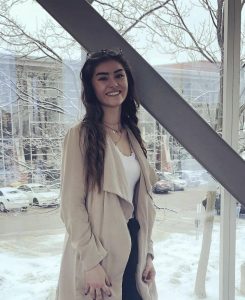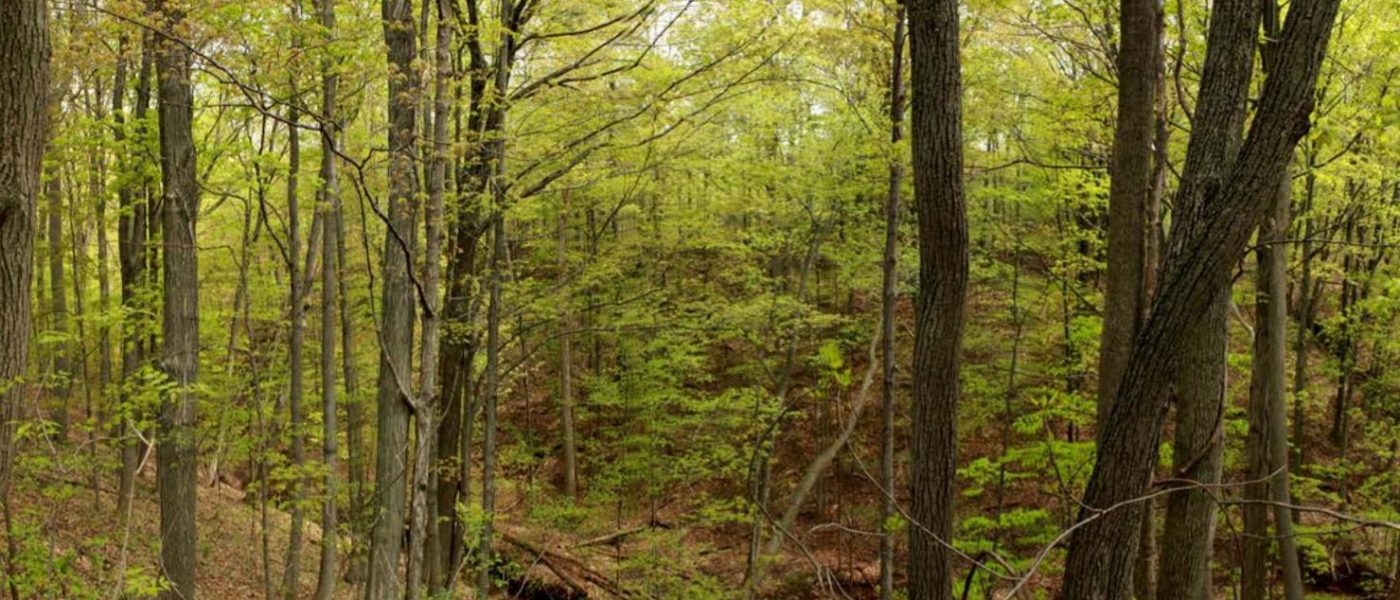The name ‘McMaster Forest’ was originally approved by the McMaster Senate and the Board of Governors on October 22, 2015. With a continued vision for the property and to support reconciliation, the McMaster Senate and the Board of Governors approved updated names for the property on June 9, 2022. These new names will be displayed in Cayuga, Ojibwe, and English. We thank Renae Hill and Cheyanne Herder for their time and knowledge to develop these names and translations.
This land and the rest of the surrounding Hamilton area are situated on traditional territories shared between the Haudenosaunee confederacy and Anishnaabe nations. These lands are protected by the Dish with One Spoon Wampum belt. The wampum uses the symbolism of a dish to represent the territory, and one spoon to represent that the people are to share the resources of the land and only take what they need.
Ne:toh ho: gyo’tgo:t egahado:do’k – Cayuga (Gayogohó:no’)
Nan-toe hone gyo-tgont en-gaw-haw-doe-doke – Phonetics
“This place will always be a standing forest” – Rough English Translation
 About the Speaker – Renae Hill
About the Speaker – Renae Hill
Cayuga (Gayogohó:no’) is a critically endangered language globally according to UNESCO. Most of the remaining fluent speakers are located on Six Nations of the Grand River in Ontario, Canada, where there are thought to be less than 25 fluent speakers remaining. Cayuga is a member of the Iroquoian language family. The Cayuga Nation is one of six belonging to the Haudenosaunee Confederacy, the other nations include the Mohawk, Seneca, Oneida, Onondaga, and Tuscarora.
Interested in learning more about the Cayuga language? Consider taking a course at McMaster! More Information
Maam-pii naksin m’tigwaaki pane – Ojibwe (Anishinaabemowin)
Mom-pii nock-sin mtig-wah-key pawnay – Phonetics
“Here is standing trees, forever and always” – Rough English Translation

About the Speaker – Cheyanne Herder
“Aaniin Boozhoo, Waabshkizi makwa ikwe indizhinikaaz, Cheyanne zhaagnaash noozwin Anishinaabe indaaw, ngik indoodem, Hamilton indoojiba, Michipicoten indibaginez. Hello my name is Cheyanne, I am Ojibwe, my people come from Michipicoten First Nations. I was born and raised here in Hamilton. I have been working towards becoming a second language speaker for the last four years. I recently graduated with my BA in Indigenous studies at Algoma U. I am proud to be an Anishinaabe kwe.”
Ojibwe (Anishinaabemowin) is an endangered language globally according to UNESCO. Most of the remaining fluent speakers are located from Manitoba to Quebec in Canada and Michigan to Montana in the Northern United States. It is estimated that there are less than 60, 000 speakers remaining, although the number of fluent speakers is estimated to be much lower and in the thousands. Many different dialects exist between different communities, with some having far fewer fluent speakers remaining. Ojibwe is a member of the Algonquian language family. The Ojibwe Nation is part of the Anishinaabe peoples, which also includes the Chippewa, Odawa, Potawatomi, Algonquin, Saulteaux, Nipissing and Mississauga Nations.
Interested in learning more about the Ojibwe language? Consider taking a course at McMaster! More Information
McMaster Forest Nature Preserve – English
Réserve Naturelle de la Forêt McMaster – French
The name ‘McMaster Forest Nature Preserve’ represents the continued vision of McMaster University to be good stewards of the land and to protect the land for future generations to come, while providing a space where students, staff/faculty, and community members can learn, research, and recreate in nature. The name can be further broken down as follows:
‘McMaster’ – From the namesake of our university
‘Forest’ – The property is home to rich deciduous and mixed forests, along with intact old growth forests. 75% of the property is forested!
‘Nature’ – Tallgrass prairie, meadows, wetlands, forests, ravines, and creeks can all be found in this area. Making it incredibly biodiverse, with over 1000 species of plants, animals, and fungi calling it home.
‘Preserve’ – To preserve the property for future generations, for research, for recreation, for teaching, and for the conservation of the environment.

